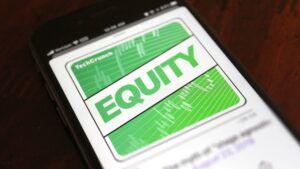A guide for founders who have less than 12 months of runway

Valuations in 2022 have been falling like a rock as the war in Ukraine rages, inflation skyrockets and the Fed tightens the screws.
Fintech firm, Klarna, whose valuation plummeted 85% to just $6.5 billion from $45.6 billion a year ago, is an extreme example of this. Klarna’s woes are also related to the “buy now, pay later” subsector falling out of favor, but it’s not alone. Almost all tech companies are seeing their valuations decline — the Nasdaq is now more than 31% below its all-time high on November 19, 2021.
The public market’s pessimism is bleeding into the private market as well. Even early-stage deals are being affected; many new seed and Series A deals now valuing startups at about 50% less than last year.
Why create a realistic valuation?
Amid a global meltdown, it is critical for a startup’s management to realistically assess the company’s valuation to increase its chances of securing the next round of capital or an exit via M&A. Tech companies that continue to hold on to their unrealistic 2021 valuations will find it very challenging to finance or sell the company and may risk running out of runway.
The higher you expect your startup’s valuation to be, the lower the probability of the deal going through.
Selling your company below the last round’s valuation can be painful, but closing it down, firing all your employees and liquidating the assets will be excruciating at the least.
Companies with decent runway — say, over 12 months — don’t need to change their valuations unless an M&A event occurs. But companies who don’t have as much cash on hand may find it helpful to reassess their valuations so they can consider more realistic financing options.
This is an opportune time to mark down your valuation, as investors are already seeing their portfolios lose money. In fact, venture firms in the U.S. are required to review valuations every quarter in a process called “mark-to-market.”






![Read more about the article [Startup Bharat] How PayMart is kiranas, retail stores, petrol pumps into virtual ATMs](https://blog.digitalsevaa.com/wp-content/uploads/2021/08/imgonline-com-ua-resize-a0aaWLnU82vhdP1-1628002737239-300x150.png)



